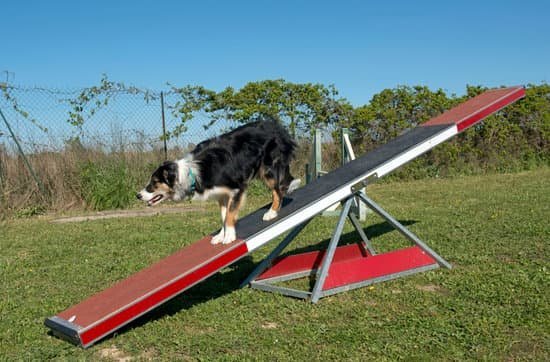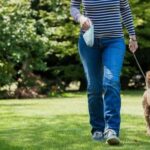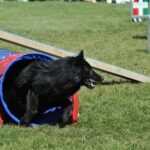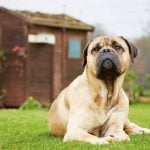House training a 1 year old dog can be a challenging task, but with the right approach and guidance, it is certainly achievable. In this article, we will explore the importance of house training for a 1 year old dog and provide valuable tips and techniques to help you get started on this journey.
House training is crucial for several reasons. Firstly, it promotes good hygiene and cleanliness within your home. No one wants to deal with constant messes and accidents on a daily basis.
Secondly, it establishes boundaries and teaches your dog appropriate behaviors in the house. By setting clear expectations and rules, your dog will learn what is acceptable behavior when indoors. Lastly, house training also strengthens the bond between you and your furry companion, as you work together towards a common goal.
However, house training a 1 year old dog may present some unique challenges compared to training a puppy. At this age, dogs may have developed certain habits or behaviors that need to be addressed and modified. Additionally, they may have more physical control over their bladder and bowel movements, making it important to adapt your training techniques accordingly.
In the following sections of this article, we will delve into understanding these challenges further and discuss effective strategies for successful house training. By implementing these methods consistently and patiently working through any setbacks or accidents along the way, you can create a structured environment that encourages good behavior and leads to a well-behaved and house trained 1 year old dog.
Understanding the Challenges
House training a 1-year-old dog can present unique challenges compared to training a younger puppy. Understanding these challenges can help pet owners effectively navigate the process and successfully house train their older canine companion.
One of the main reasons why house training a 1-year-old dog may be different is that they have already developed certain habits and behaviors. Unlike puppies, who are still learning about appropriate bathroom etiquette, older dogs may have already established set routines and preferences. This means that they might have a harder time adjusting to new rules and expectations regarding where they should eliminate.
Another challenge with house training an older dog is that they may have had previous experiences or traumas that affect their behavior. For example, a rescue dog may have come from an environment where they were not properly trained or received inconsistent discipline. These past experiences can make it more difficult for them to understand and follow the rules of house training.
Additionally, a 1-year-old dog may already have stronger bladder control compared to a younger puppy. While this can be advantageous in terms of accidents being less frequent, it also means that they might hold on for longer periods of time before needing to eliminate. This increased bladder capacity can make it harder for the owner to predict when their dog needs to go outside, especially if there are no clear signals given by the dog.
To address these challenges, it is important for owners to approach house training with patience and understanding. Recognize that it may take some time for your 1-year-old dog to adjust to new routines and expectations. Consistency in both your actions and reactions will be vital in helping your furry friend understand what is expected of them.
Some strategies to consider when house training a 1-year-old dog include:
- Restarting the training process: Even if your dog has had some basic potty training before, it’s important to go back to the basics. Start with frequent potty breaks outside, using positive reinforcement when your dog eliminates in the appropriate spot.
- Using a crate or confinement area: Crate training can be a valuable tool in house training an older dog. By confining them to a specific area when unsupervised, you can prevent accidents and encourage them to hold their bladder until they are taken outside.
- Establishing a consistent feeding schedule: Feeding your dog at the same times each day can help regulate their bathroom habits. This makes it easier for you to predict when they will need to eliminate and take them outside accordingly.
By understanding the challenges that come with house training a 1-year-old dog, pet owners can set realistic expectations and implement strategies tailored to their individual dog’s needs. With patience, consistency, and proper guidance, it is possible to successfully house train an older canine companion and enjoy a well-behaved, potty-trained pet.
Set Clear Expectations
Establishing a routine is crucial when house training a 1-year-old dog. By setting clear expectations and implementing a consistent schedule, you can create an environment that promotes success and helps your furry friend understand what is expected of them.
Firstly, it’s important to establish a regular feeding schedule for your dog. By feeding them at the same times each day, you can predict when they will need to go outside to relieve themselves. This consistency will help your dog develop regular bathroom habits and make it easier for you to anticipate their needs.
In addition to meal times, you should also establish specific times for bathroom breaks. Take your dog outside after each meal, as well as first thing in the morning, before bedtime, and periodically throughout the day. Be patient and give them ample time to do their business – it may take a few minutes for them to get comfortable and find the right spot.
While establishing a routine is important, it’s also crucial to be flexible and adapt to your dog’s individual needs. Some dogs may need more frequent bathroom breaks than others, especially if they have smaller bladders or are prone to accidents. Pay attention to your dog’s body language and behavior – if they seem anxious or restless, it may be a sign that they need to go outside.
| Feeding Times | Bathroom Breaks |
|---|---|
| Morning: 7:00 AM | After each meal |
| Noon: 12:00 PM | First thing in the morning |
| Evening: 6:00 PM | Before bedtime |
Remember to always monitor your dog closely during the house training process. Supervise them whenever they are indoors, especially in the early stages. If you notice any signs that they may need to go outside, such as sniffing the floor or circling, immediately take them to their designated bathroom spot.
By setting clear expectations and establishing a routine for your 1-year-old dog, you can greatly increase the chances of successful house training. With consistency and patience, your furry friend will quickly learn where and when it is appropriate to relieve themselves, leading to a well-behaved and happy companion.
Preparing for House Training
Gathering the Essentials
Before embarking on the journey of house training your 1-year-old dog, it is essential to gather all the necessary supplies and tools. By being fully prepared, you can create a comfortable and conducive environment for successful house training.
First and foremost, you will need to invest in a crate or a kennel for your dog. This will serve as their den and provide them with a designated area where they can feel secure. Make sure to choose the appropriate size based on the breed and size of your dog. The crate should be big enough for them to stand up, turn around, and lie down comfortably.
Additionally, you will need bedding material such as blankets or towels for the crate. These should be easily washable in case of accidents. It is important to note that while dogs desire comfort, avoid using plush bedding that may encourage them to relieve themselves inside the crate.
Implementing Consistent Feeding Schedule
A consistent feeding schedule plays an integral role in house training your 1-year-old dog. Establish set meal times so that you can predict when they need to go outside for bathroom breaks. Consult with your veterinarian or do research specific to your dog’s breed on how many meals they require per day.
Alongside regular feedings, it is crucial to have ample access to fresh water throughout the day. However, during the initial stages of house training, monitor their water intake more closely before bedtime to prevent accidents during the night.
Investing in Cleaning Supplies
Accidents are inevitable during house training, especially when dealing with a 1-year-old dog who may still be learning proper bathroom etiquette. Therefore, investing in quality cleaning supplies is essential for maintaining cleanliness and preventing odors.
Choose an enzyme-based cleaner specifically formulated for pet stains and odors. Regular household cleaners may not eliminate traces of urine or feces entirely, leading to repeated accidents in the same spot. Enzyme cleaners break down the organic compounds, eliminating odors and discouraging your dog from revisiting the same area.
By gathering the essentials, implementing a consistent feeding schedule, and investing in quality cleaning supplies, you set yourself up for success in house training your 1-year-old dog. With these preparations in place, you can create a comfortable and supportive environment that will make the house training process more effective and efficient.
Reinforcing Basic Commands
When it comes to house training a 1 year old dog, obedience training plays a vital role in ensuring success. Teaching your dog basic commands not only helps with overall behavior and control, but it also lays the foundation for successful house training. In this section, we will delve into the importance of reinforcing basic commands and how it can contribute to effective house training.
One of the fundamental commands that every dog should learn is “sit.” This command is beneficial during house training as it teaches your dog self-control and can be used to redirect their attention when needed. To reinforce this command, make sure to use consistent verbal cues along with hand signals. Use treats or positive reinforcement whenever your dog successfully follows the command, as this will help to further reinforce their understanding and motivation.
Another important command for house training is “stay.” By teaching your dog to stay in one place, you create an opportunity to establish boundaries within the home environment. This command becomes especially useful during times when you need your dog to remain calm and stationary, such as when guests arrive or during mealtime. Consistency and patience are key when reinforcing the “stay” command, gradually increasing the duration over time.
Additionally, the “leave it” command can be invaluable during house training. This command teaches your dog not to pick up or chew on objects that are off-limits within the home. It is particularly helpful in preventing accidents or unwanted behaviors like chewing on furniture or shoes.
Start by using treats as distractions and rewards when practicing this command with your dog. Gradually remove treats from sight but continue rewarding them verbally and with praise each time they successfully follow the “leave it” cue.
Incorporating obedience training into your house training routine will provide structure and guidance for your 1 year old dog. Remember to keep sessions short but frequent multiple times a day, allowing your dog to develop good habits and reinforce positive behavior. With consistent practice and reinforcement, your dog will become more obedient, leading to a smoother house training process.
Patience is Key
Setbacks and accidents are common occurrences when house training a 1-year-old dog. It’s important to approach these situations with patience and understanding. Dogs, just like humans, may have difficulties adjusting to new routines and environments, leading to accidents indoors. However, with the right approach, setbacks can be effectively addressed, and accidents can be minimized as your dog becomes more familiar with the house training process.
One of the first things to remember when dealing with setbacks and accidents is not to punish or scold your dog. Reacting harshly can create fear or anxiety in your pet and hinder their progress in house training. Instead, focus on positive reinforcement by rewarding your dog for successful potty breaks outside and using verbal praise or treats to reinforce good behavior.
It’s also important to clean up accidents thoroughly using an enzymatic cleaner specifically designed for pet messes. This will help eliminate any lingering smells that could attract your dog back to that spot for future accidents. Additionally, if you catch your dog in the act of having an accident indoors, interrupt them gently but firmly by clapping your hands or saying a particular word like “oops” or “outside,” then immediately take them outside to finish their business.
| Age | Frequency of Accidents |
|---|---|
| 1-2 months | Very frequent (every 30 minutes – 1 hour) |
| 2-4 months | Frequent (every 1-3 hours) |
| 4-6 months | Moderate frequency (every 3-4 hours) |
| 6+ months | Occasional accidents (1-2 accidents per week) |
Remember, setbacks and accidents are a normal part of the house training process, and it’s crucial to remain patient and consistent with your training efforts. The key is to learn from each setback and adjust your approach accordingly. With time and perseverance, your 1-year-old dog will become more reliable in their house training habits.
Consistency is Crucial
Consistency is crucial when it comes to successfully house training a 1-year-old dog. Creating a structured environment can help your furry friend understand what is expected of them and make the process much smoother. Here are some tips to help you establish consistency in your house training routine:
- Establish a regular feeding schedule: Feed your dog at the same times each day, as this will also regulate their bathroom habits. By feeding them on a consistent schedule, you can predict when they will need to go outside and plan your potty breaks accordingly.
- Designated potty area: Choose a specific spot in your yard where you want your dog to do their business. Take them to this spot consistently every time they need to go out and give them a command such as “go potty” or “do your business.” This will help them associate that area with going to the bathroom.
- Set a consistent walking routine: Take your dog for walks at the same times each day, preferably after meals or whenever they seem restless. This not only provides exercise but also gives them an opportunity to relieve themselves outside.
Creating a structured environment also involves setting clear boundaries within the house, especially when your dog is unsupervised. Consider using baby gates or crate training to limit access to certain areas until they have become fully house trained.
In addition, it is important to be consistent with any rules and commands you have established during obedience training. If you are allowing certain behaviors one day and discouraging them the next, it can confuse your dog and delay the success of their house training efforts.
Remember, consistency is key when it comes to creating a structured environment for successful house training. By implementing these tips into your routine, you will provide clear expectations for your 1-year-old dog and make the process much easier for both of you.
Positive Reinforcement
Positive reinforcement is a key component of house training a 1 year old dog. By rewarding good behavior, you can encourage your dog to continue exhibiting the desired actions and habits. This section will explore effective techniques and rewards that can be used to reinforce positive behavior during the house training process.
Use treats
Using small, tasty treats as rewards can be a powerful motivator for your dog. Whenever your dog successfully follows the house training routine, such as going to the bathroom outside or using their designated spot indoors, immediately give them a treat and praise them enthusiastically. This reinforces the connection between the desired behavior and the reward, making it more likely that they will repeat it in the future.
Verbal praise and affection
In addition to treats, verbal praise and affection are important tools for positive reinforcement. Whenever your dog behaves appropriately during house training, use a happy tone of voice to express your approval and shower them with affection. Dogs thrive on attention from their owners, so this positive reinforcement helps strengthen the bond between you both while encouraging good behavior.
Clicker training
Clicker training is another effective technique for positive reinforcement during house training. By using a clicker or a specific word as a marker when your dog exhibits desired behavior, you create a clear signal that tells them they have done something right.
Follow every click with an immediate reward such as a treat or verbal praise. Over time, your dog will associate the sound of the clicker or word with positive experiences and will be more likely to repeat the behavior.
Consistency in timing
Timing is crucial when using positive reinforcement to encourage good behavior. Make sure you deliver rewards immediately after your dog exhibits the desired behavior so they understand what they are being rewarded for. Delayed rewards may confuse your dog and make it harder for them to associate the behavior with the positive reinforcement.
Using these effective techniques and rewards for positive reinforcement will not only help your 1 year old dog understand what is expected of them during the house training process but also strengthen the bond between you and your furry companion. It is important to remember that every dog is unique, so experiment with different rewards and techniques to find what works best for your dog’s individual personality and preferences.
Patience and consistency are key when using positive reinforcement, so stay committed and celebrate every step of progress towards a well-behaved and house trained dog.
Dealing with Specific Challenges
House training a 1 year old dog can come with its own set of challenges, particularly when it comes to addressing specific issues such as separation anxiety and marking. These challenges can make the house training process more difficult and frustrating for both the dog owner and the dog. However, with patience, consistency, and the right techniques, these challenges can be overcome.
Separation anxiety is a common issue that many dogs experience when they are left alone. It can manifest in behaviors such as excessive barking, destructive chewing, or even toileting indoors. To address separation anxiety during house training, it’s important to gradually acclimate your dog to being alone.
Start by leaving your dog alone for short periods of time and gradually increase the duration over time. Providing interactive toys or puzzles can help keep your dog occupied while you’re away. Additionally, setting up a designated area such as a crate or a playpen can provide a safe space for your dog when you’re not home.
Another issue that may arise during house training is marking behavior. Marking is when a dog urinates on vertical surfaces in order to mark territory or communicate with other dogs. To address marking behavior during house training, it’s important to distinguish between marking and regular accidents.
If your dog is only urinating in small amounts in specific locations around the house, it may be marking behavior rather than an accident due to incomplete house training. In this case, it’s important to clean any marked areas thoroughly with an enzymatic cleaner to remove any scent markers that may encourage further marking behavior.
Addressing these specific challenges during the house training process requires patience and consistency from the dog owner. It’s important to remember that setbacks and accidents are part of the learning process, and punishing or scolding your dog for accidents will not be effective in addressing these issues.
Instead, focus on positive reinforcement techniques such as rewards, praise, and treats when your dog exhibits the desired behaviors. By consistently reinforcing good behavior and addressing specific challenges with the appropriate techniques, you can successfully house train your 1 year old dog.
| Challenge | Addressing Techniques |
|---|---|
| Separation Anxiety | – Gradually acclimating the dog to being alone\n
|
| Marking Behavior | – Distinguishing between marking and accidents\n
|
Expert Tips and Tricks
Seek Professional Guidance
If you are struggling with house training your 1-year-old dog, it may be beneficial to seek the guidance of a professional trainer. Trainers have the expertise and experience to assess your dog’s specific needs and provide tailored advice and techniques to help you succeed in house training.
They can also offer personalized solutions for any challenges or setbacks you may be encountering. A professional trainer can provide invaluable tips and tricks that are specifically tailored to your dog’s age, breed, temperament, and individual needs.
Consistency is Key
Consistency is crucial when it comes to house training a 1-year-old dog. All members of the household should be on board and follow the same set of rules and routines. This means using the same commands and cues for toileting and rewarding good behavior consistently. Additionally, maintain a consistent schedule for feeding, exercise, potty breaks, and bedtime to help your dog understand what is expected of them.
Use Positive Reinforcement Techniques
Positive reinforcement techniques are highly effective in house training dogs of any age, including 1-year-olds. Rewarding good behavior with praise, treats, or playtime reinforces the desired actions and helps your dog associate using the designated potty area with positive outcomes. Avoid punishment or scolding for accidents, as this may confuse your dog or create anxiety around toileting.
To reinforce good behavior during house training sessions, ensure you use rewards immediately after your dog has successfully eliminated in their designated spot. Consistency in rewarding good behavior will motivate your 1-year-old dog to continue displaying appropriate toilet habits.
Remember that each dog is unique and responds differently to various reinforcement techniques. Experiment with different rewards such as treats or toys to determine what motivates your canine companion the most during house training sessions.
By following these expert tips and tricks from professional trainers and staying patient and consistent, you can help your 1-year-old dog successfully become house trained. With time and the right approach, your furry friend will develop proper toilet habits and become a welcome member of your household.
Conclusion
House training a 1-year-old dog can be a challenging process, but with patience, consistency, and the right techniques, it is definitely achievable. Throughout this article, we have discussed the importance of house training, the challenges that may arise when training an older dog, and the steps you can take to establish a successful routine. We have also highlighted the significance of obedience training, as well as the need for patience and consistency in dealing with setbacks and accidents.
By following these guidelines and incorporating positive reinforcement techniques and rewards, you can effectively encourage good behavior in your 1-year-old dog. However, it’s important to remember that each dog is unique and may require different approaches or solutions to specific challenges such as separation anxiety or marking. Seeking advice from professional trainers who specialize in house training can provide valuable insights and tips tailored to your dog’s individual needs.
Ultimately, reaching the goal of a well-behaved and house trained 1-year-old dog is a journey that should be celebrated. It requires dedication on your part as a responsible pet owner but witnessing your furry friend grow and develop good habits will bring immense joy and satisfaction. Remember to stay positive throughout the process and keep reinforcing the desired behaviors consistently.
With time, patience, and love, you will successfully house train your 1-year-old dog and create a harmonious environment for both of you. So get ready to celebrate this milestone achievement together.
Frequently Asked Questions
Is it possible to potty train a 1 year old dog?
Potty training a 1-year-old dog is definitely possible, although it may require a bit more patience and consistency compared to training a younger puppy. Just like with any age, the key is establishing a routine and being consistent with it. Start by designating a specific spot in your yard where you want your dog to eliminate and take them there regularly throughout the day.
Reward them with praise or treats whenever they do their business in the designated area. Additionally, closely monitor their behavior indoors and immediately take them outside if they show signs of needing to go. Use positive reinforcement and avoid punishment, as this will only confuse and stress your dog during the training process.
Why is my 1 year old dog not house trained?
There could be various reasons why your 1-year-old dog is not house trained yet. One common reason is inconsistent or insufficient training. If you haven’t been consistently reinforcing proper potty habits, it can lead to confusion for your dog.
Another possibility is that there could have been prior inconsistencies or accidents that have resulted in a lack of clarity about where they should eliminate. Additionally, medical issues such as urinary tract infections can also contribute to difficulties in house training. It’s essential to rule out any underlying health concerns with a veterinarian and then focus on implementing consistent potty training techniques.
How do you potty train a 1 year old puppy?
Potty training a 1-year-old puppy follows similar principles as training younger dogs but may require some extra effort due to established habits or potential previous inconsistencies in their upbringing. Begin by setting up a regular feeding schedule so that you can predict when your puppy needs to go. Take them outside first thing in the morning, after meals, after naps, and before bedtime – consistently following this routine helps reinforce proper toilet habits.
Be patient during this process and reward your puppy each time they eliminate in the desired spot outdoors using verbal praise or treats. Supervise them indoors at all times until they are reliable with their potty habits, preventing accidents from occurring inside. Remember, consistency, positive reinforcement, and patience are key when potty training a 1-year-old puppy.

Welcome to the blog! I am a professional dog trainer and have been working with dogs for many years. In this blog, I will be discussing various topics related to dog training, including tips, tricks, and advice. I hope you find this information helpful and informative. Thanks for reading!





